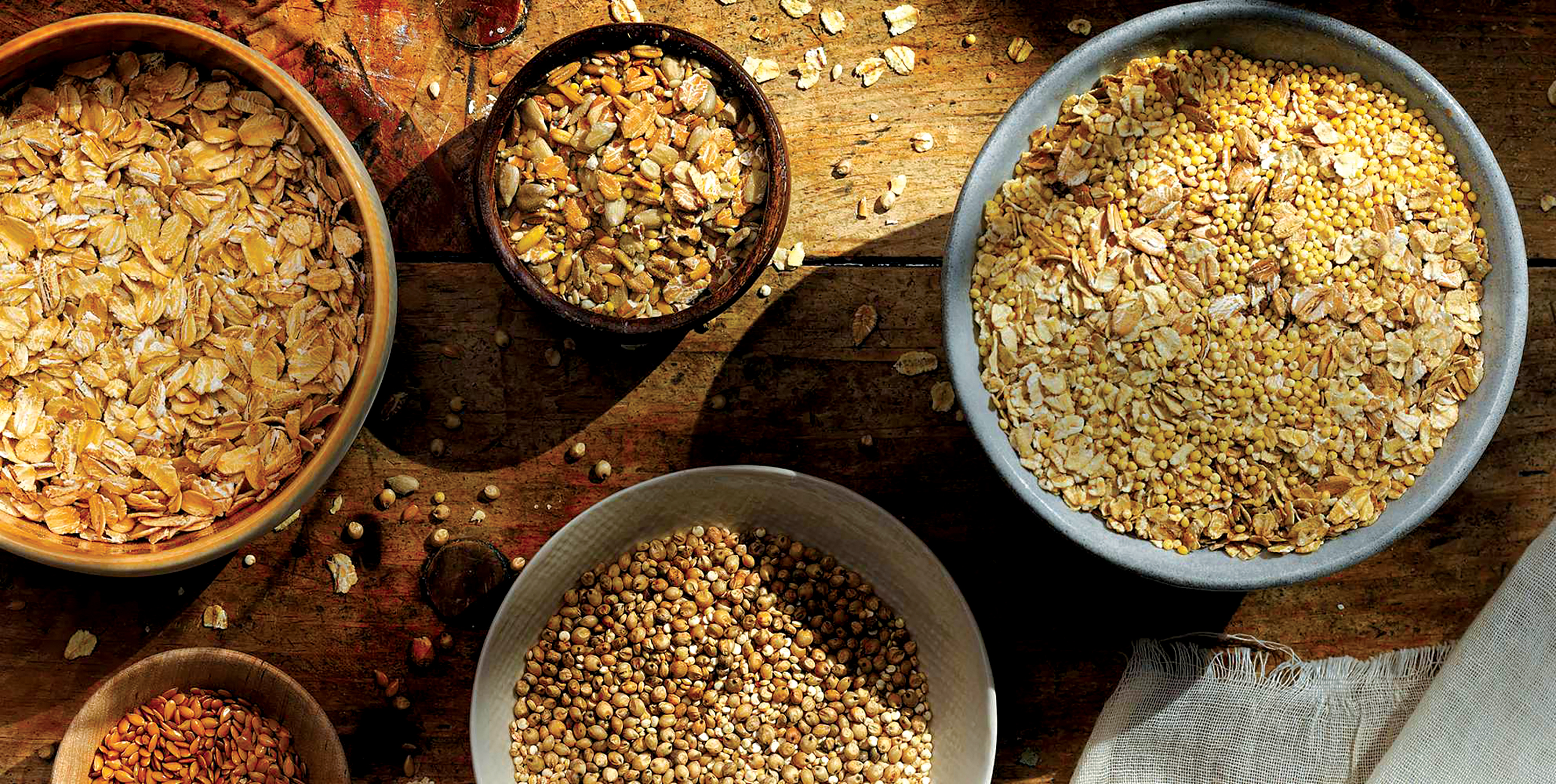
Nowadays, if you tell people to give up wheat and rice to improve their health, their first reaction is outrage. They tend to retort: ‘These have been traditional staple foods for our families for generations. What harm can these grains do when we have grown up consuming them?’ Unfortunately, the gluten in these grains is doing much harm to our bodies, if only we knew.
I think it is necessary to explain the matter in some detail.
First, we must understand that wheat, the seed that grows on grass, is a staple food not only in India but worldwide. Ground into flour, it is used in bread, cakes, doughnuts, burger buns, pretzels, pizza, noodles and pasta. In India, our aata used to have more husk than it does now, when it has become whiter and finer. We have to now shun it because the medical profession has woken up to its ill effects – because of the way wheat is processed these days, it is heavy on carbohydrates and denuded of vitamins, minerals and fibre. The same kind of processing makes corn and rice undesirable in today’s age.
As an alternative, nutritionists recommend switching to cereals (which are seeds of different species of grass) or pseudo-cereals, which are not grasses but treated as cereals. These seeds too can be ground into a powder. Every geographical region of the world has its own local varieties which were popular a century ago when farming was the main occupation of most countries, and grains that were locally grown were consumed locally. Over time, the grains that were grown on a large scale like wheat, rice and corn became more popular.
In India, the traditional grains that are now seeing a revival are millets, which are seeds of much smaller size belonging to the Poaceae (grass) family. They are gluten-free and chockful of vitamins and minerals. You have a choice of pearl millet (bajra), finger millet (ragi), sorghum (jowar, jau), foxtail millet (thinai), barnyard millet (jhangora). The first three can be ground into flour and last two boiled like rice. In Delhi, you can buy them in most neighbourhood chakkis (mills), Fabindia or organic food stores. You can also order them online from Amazon.
Amaranth (ramdana) and quinoa are other grain gaining a lot of popularity. Amaranth is gluten free and is loaded with more proteins and calcium than most other grains. It containing the amino acid lysine which is not usually found in seeds and even contains vitamin C. You might read that it comes from Latin America but India’s ramdana laddoos and chikki are well known to older generations.
The plant quinoa (sabudana) is a cousin of spinach, and its seeds are loaded with the same benefits as amaranth plus magnesium, Vitamins B and E, iron, potassium, calcium, phosphorus and various antioxidants. No wonder it is regarded as a superfood. In India, it is used in poha, tikkis and khichdi and tossed in salads.
One good reason for patronising traditional grains, apart from the health benefits, is that you can help our economy in this way. Traditional farmers can grow a crop on their fields that they can themselves consume, selling only the surplus in the market – preventing them from going for cash crops which are costly to produce and which often fail. In a remote village of Chinoni in Uttarakhand’s Almora district, for example, an outfit called Aajeevika is selling local grains under the brandname Himalayan Fresh. Farming in these regions has always been organic and now the hill people are able to cash in on the growing popularity of these grains, helping the younger generation to stay in their native villages instead of migrating to the plains looking for work.
It’s not just rotis or breakfast cereals which you can choose as a healthier option. Some companies are preparing handy snacks with traditional grains – you can now buy them online also: quinoa pops, roasted makhana, protein bars, nuts, seeds and various mixtures. Before trying them out, read labels carefully to make sure they are using healthy ingredients, no additives or taste enhancers. Also, there should be no sugar, artificial colour or flavours.
The health benefits of traditional grains are awesome. For instance, sorghum is high in anti-oxidants, millets can help you fight diabetes and anaemia, some reduce high cholesterol and some boost good cholesterol. All of them are easy on the digestive system. So consult a dietician and find out which one is best for you.
Dr Reshma is an advocate of wellness, prevention and holistic health. Instagram handle: dr.reshmakhattarbhagat
Veer Ahlawat’s final-round 67 sealed a three-shot win at the Rs 1 crore CIDCO Open…
OnePlus has launched the 15R smartphone and Pad Go 2 tablet in India, with prices…
Nearly 2,800 Delhi vehicles denied fuel on first day of 'No PUC, No Fuel' drive…
Delhi Police arrested five men in two fake investment scams, unearthing a Rs 24 crore…
The ED seized cash, silver and gold worth over Rs 19 crore in fresh raids…
Boho Bazaar’s Christmas edition returns to Delhi on December 20–21 with 300+ brands, live music…